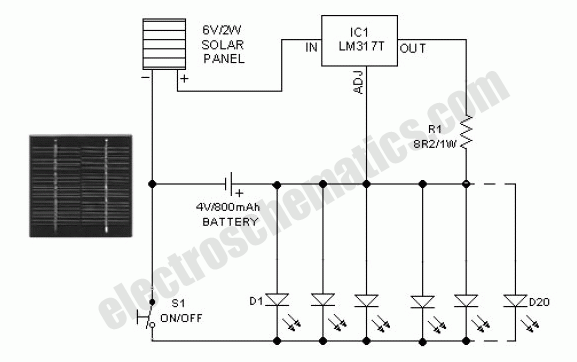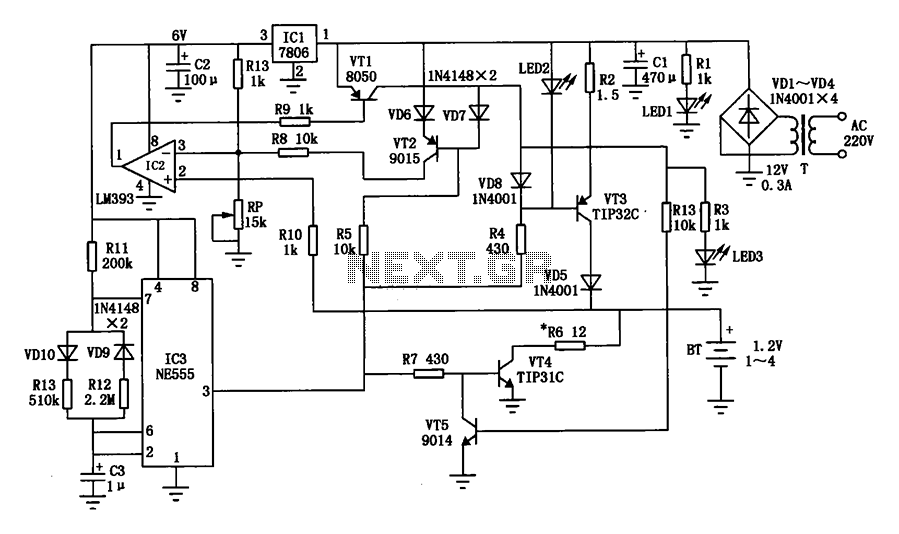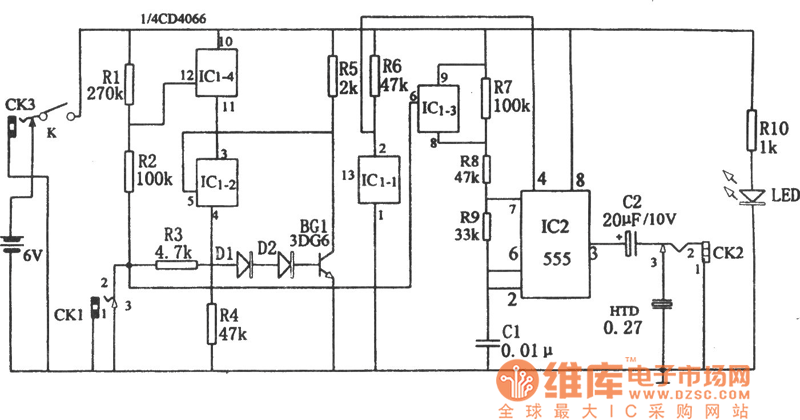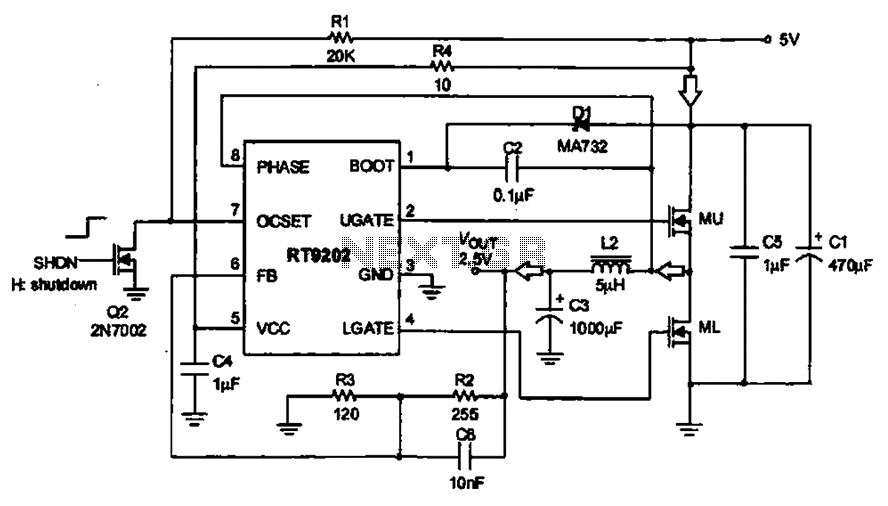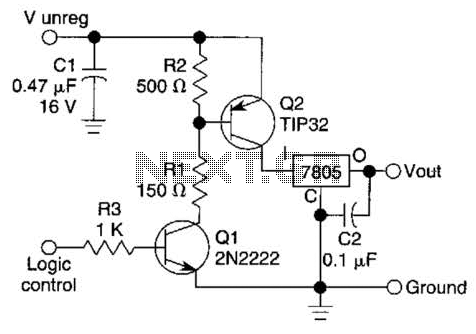
USB Battery Charger Components and Circuit using LTC4053
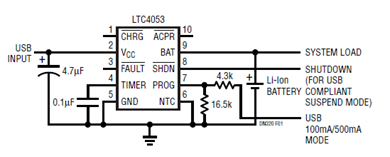
The schematic presented illustrates a minimal component solution for a USB battery charger utilizing the LTC4053 integrated circuit (IC) to create a fully compliant USB charger. This IC functions as a standalone linear charger designed for lithium-ion (Li-ion) batteries, allowing it to be powered directly from a USB port, as specified in the datasheet.
The LTC4053 is engineered to provide a straightforward charging solution for Li-ion batteries, ensuring compliance with USB charging standards. It incorporates features such as automatic detection of the battery voltage, constant current (CC) and constant voltage (CV) charging modes, and thermal regulation to prevent overheating during the charging process.
In the schematic, the LTC4053 is connected to a USB power source, typically providing 5V. The IC manages the charging cycle by controlling the current flowing into the battery. Key components in the circuit include input capacitors for power stabilization, a resistor network for setting the charge current, and output capacitors to smooth the voltage supplied to the battery.
The charger circuit also includes a feedback loop that monitors the battery voltage. When the battery reaches its full charge, the LTC4053 automatically switches to a trickle charge mode to maintain the battery's charge without overcharging. This feature is crucial for prolonging battery life and ensuring safety during operation.
Overall, the LTC4053-based USB charger circuit is an efficient and reliable solution for charging Li-ion batteries, suitable for various portable electronic devices. Its simplicity and adherence to USB standards make it a preferred choice for engineers looking to integrate battery charging capabilities into their designs.The schematic herein shows a minimum component solution to the USB battery charger using LTC4053 IC to achieve a fully compliant USB charger. This IC is a standalone linear charger for lithium ion (li-ion) batteries that can be powered directly from a USB port, according to the datasheet
🔗 External reference
The LTC4053 is engineered to provide a straightforward charging solution for Li-ion batteries, ensuring compliance with USB charging standards. It incorporates features such as automatic detection of the battery voltage, constant current (CC) and constant voltage (CV) charging modes, and thermal regulation to prevent overheating during the charging process.
In the schematic, the LTC4053 is connected to a USB power source, typically providing 5V. The IC manages the charging cycle by controlling the current flowing into the battery. Key components in the circuit include input capacitors for power stabilization, a resistor network for setting the charge current, and output capacitors to smooth the voltage supplied to the battery.
The charger circuit also includes a feedback loop that monitors the battery voltage. When the battery reaches its full charge, the LTC4053 automatically switches to a trickle charge mode to maintain the battery's charge without overcharging. This feature is crucial for prolonging battery life and ensuring safety during operation.
Overall, the LTC4053-based USB charger circuit is an efficient and reliable solution for charging Li-ion batteries, suitable for various portable electronic devices. Its simplicity and adherence to USB standards make it a preferred choice for engineers looking to integrate battery charging capabilities into their designs.The schematic herein shows a minimum component solution to the USB battery charger using LTC4053 IC to achieve a fully compliant USB charger. This IC is a standalone linear charger for lithium ion (li-ion) batteries that can be powered directly from a USB port, according to the datasheet
🔗 External reference

